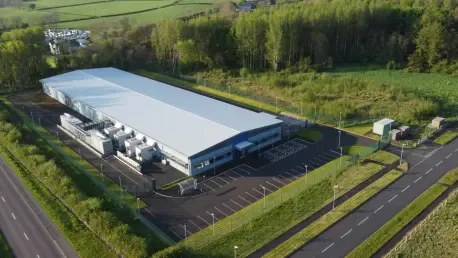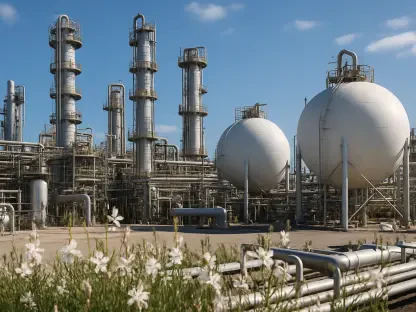Christopher Hailstone brings a wealth of experience in energy management, renewable energy, and electricity delivery, making him an invaluable resource on grid reliability and security. His insights have helped shape our understanding of the evolved energy landscape in data centers. Today, we’ll delve into the specifics of Schneider Electric’s new initiative, EcoConsult for Data Centers, which promises significant advancements in operational efficiency and reliability for data centers.
Can you explain what prompted Schneider Electric to introduce the EcoConsult for Data Centers service?
Schneider Electric identified a pressing need within the industry for tailored consulting services aimed at enhancing the operational efficiency and reliability of data centers. As digital environments become more demanding, maintaining peak uptime while controlling costs has become a critical challenge for data center operators. Schneider recognized this gap and introduced EcoConsult to provide expert assessments and modernization plans that meet these technological and operational demands.
How does EcoConsult for Data Centers aim to boost operational efficiency and maximize uptime?
EcoConsult for Data Centers primarily focuses on comprehensive evaluations of a data center’s infrastructure, encompassing power and cooling systems. The service draws on a global network of consultants and service representatives to assess performance, pinpoint areas for improvement, and develop medium- to long-term asset management strategies. By doing this, EcoConsult ensures that data centers not only operate efficiently but also remain reliable and cost-effective over time.
Could you elaborate on the types of consultants and service representatives involved in EcoConsult for Data Centers?
The EcoConsult team is remarkably diverse, comprising over 250 consultants and 6,500 service representatives worldwide. These professionals bring a mix of expertise in areas such as electrical engineering, mechanical systems, cybersecurity, and information technology. Their combined knowledge allows them to quickly identify potential issues and propose effective solutions to enhance data center performance.
Why is it important for data centers, specifically older ones, to have a proactive asset management strategy?
With about 36% of U.S. data centers being older than a decade, these facilities often operate with outdated equipment that lacks modern efficiencies. A proactive asset management strategy is critical for these older data centers to extend the lifespan of their infrastructure, reduce unexpected downtimes, lower operational costs, and enhance overall reliability.
What are some key components of the medium- to long-term roadmap that EcoConsult provides for aging data centers?
The roadmap offered by EcoConsult includes strategies for increasing uptime, extending IT and server infrastructure lifespans, and integrating sustainability initiatives. These plans also focus on reducing the total cost of ownership. Additionally, they are designed to be future-ready, taking into account both current demands and the technological advancements needed to support future growth.
Can you walk us through the process Schneider consultants follow during the initial site assessment?
The process begins with a thorough site visit where consultants evaluate both the physical and operational status of key systems such as power distribution and cooling infrastructure. They also assess cybersecurity measures and the condition of IT and server assets. This helps create a detailed picture of the facility’s current performance and potential risks.
What kind of insights and guidance can data center operators expect from the final report provided after the initial consultation?
The final report delivers a comprehensive analysis of the data center, including detailed insights and specific recommendations. These recommendations are often prioritized by criticality, allowing operators to understand which areas require immediate attention and which can be scheduled for future upgrades. The report can include suggestions for optimizing equipment sizing, inventory management, and even software and firmware upgrades.
How do digital maps of power and cooling systems help uncover critical issues in a data center?
Digital maps provide a visual representation of the data center’s infrastructure, making it easier to identify inefficiencies and potential failure points. By analyzing these maps, consultants can pinpoint where energy is being wasted and suggest solutions that often lead to significant energy savings.
Beyond hardware, does the consultation include recommendations for software and firmware upgrades?
Absolutely. The consultation takes a holistic view of the data center’s needs, encompassing both hardware and software. Upgrades to software and firmware can be critical for improving the efficiency, security, and overall performance of data centers.
In December, Schneider introduced a new data center reference design with NVIDIA. How does this design help address energy and sustainability challenges?
The new reference design, co-developed with NVIDIA, targets the escalating energy and sustainability challenges driven by the high demand for AI systems. This design is optimized to reduce energy consumption while maintaining high performance, effectively supporting sustainability initiatives without compromising on efficiency.
Could you discuss the significance of the new uninterruptible power supply solution, Galaxy VXL, and its benefits?
The Galaxy VXL stands out due to its compact size, occupying 52% less space than comparable solutions. This uninterruptible power supply not only saves valuable floor space but also improves energy efficiency and reliability, which is crucial for maintaining the continuous operation of data centers.
What recent trends have you seen in data center investment, and how has that affected Schneider’s energy management business?
The increased investment in data centers has had a noticeable positive impact on Schneider’s energy management business. This surge in investment has led to higher demand for reliable, efficient, and scalable energy solutions, driving growth and innovation within our product and service offerings.
Schneider has projected a 10% annual growth in their data centers and networks business through 2027. What strategies are in place to achieve this growth?
To achieve this ambitious growth, Schneider is focusing on expanding its range of services and solutions to meet emerging demands, enhancing its global consulting capabilities, and developing new technologies to improve efficiency and sustainability. Strategic partnerships and continued investment in R&D also play vital roles in driving this growth.
How does Schneider Electric see its role evolving in the rapidly growing data center industry?
Schneider Electric aims to remain at the forefront of providing innovative, efficient, and reliable solutions for data centers. We see our role evolving to include more comprehensive service offerings and holistic strategies that integrate both current needs and future trends, ensuring that our clients are well-equipped to handle growth and technological advancements.
Can you comment on the competition in the data center solutions market, such as Johnson Controls’ new Global Data Center Solutions? How does Schneider plan to differentiate itself?
The competition certainly keeps us on our toes and pushes us to continuously innovate. Schneider distinguishes itself through its extensive expertise, global reach, and commitment to sustainability. Our integrated approach to energy management, coupled with our broad range of consulting services and technological advancements, ensures we deliver unique value and reliability to our customers.
What is your forecast for the future of data centers in the next decade?
The future of data centers will likely be defined by advancements in energy efficiency, sustainability, and integration with AI and machine learning technologies. We expect significant developments in modular and scalable data center solutions to handle increased data demands. The focus will increasingly be on reducing the environmental impact while enhancing the operational capabilities and resilience of data centers. With the rapid evolution of technology, ongoing innovation will be key to staying ahead in this dynamic industry.









